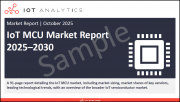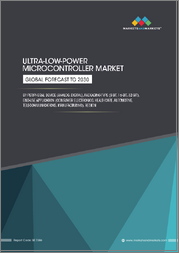
|
시장보고서
상품코드
1722934
세계의 8비트 마이크로컨트롤러 시장 규모, 점유율, 동향, 예측 : 제품 유형, 최종 이용 산업, 지역별(2025-2033년)8-Bit Microcontroller Market Size, Share, Trends and Forecast by Product Type, End Use Industry, and Region, 2025-2033 |
||||||
8비트 마이크로컨트롤러 세계 시장 규모는 2024년에 86억 8,000만 달러에 달했습니다. 향후 IMARC Group은 2033년에는 145억 8,000만 달러에 달하고, 2025-2033년 5.63%의 연평균 복합 성장률(CAGR)을 보일 것으로 예측했습니다. 현재 아시아태평양이 시장을 지배하고 있으며, 2024년 시장 점유율은 57.8%를 넘어섰으며, 8비트 마이크로컨트롤러 시장 점유율은 주로 산업 자동화, 자동차, 가전제품 용도 수요에 힘입어 꾸준히 확대되고 있습니다. 기타 주요 성장 요인으로는 전력 소비 감소, 비용 효율성, 임베디드 시스템에의 통합 용이성, 효과적이고 컴팩트하여 다양한 용도에 적합하다는 점 등이 있습니다.
8비트 마이크로컨트롤러는 8비트 중앙연산처리장치(CPU)와 메모리, 컨트롤러, 인터페이스, 외부 하드웨어 등 연산을 보조하는 고성능의 최신 주변기기 일체를 탑재하고 있습니다. 저전력으로 컴퓨터의 성능을 향상시키기 위해 워드프로세서, 게임 소프트웨어, 음악 개발, 표계산, 작업 관리 등에 널리 활용되고 있습니다. 현재 전 세계 제조업체들은 멀티코어, 고급 하드웨어 보안, 인터넷 기능 등 복잡한 기능을 통합한 다양한 형태와 크기의 최신 8비트 마이크로컨트롤러를 출시하고 있습니다.
8비트 마이크로컨트롤러 시장 동향 :
8비트 마이크로컨트롤러는 가혹한 환경 조건과 스트레스를 견디기 위해 자동차 전자기기에 내장되어 있습니다. 이는 급속한 도시화, 소득 수준 상승, 도로 인프라 개선으로 인한 승용차 판매 증가와 함께 시장 성장에 기여하는 주요 요인 중 하나입니다. 이와는 별도로, 원격 의료 및 원격 환자 모니터링에서 스마트 의료기기 기술의 사용 확대는 연속 약물 전달 및 실시간 투약 제어를 용이하게 하는 분무기 및 주사기 펌프에서 8비트 마이크로컨트롤러에 대한 수요를 촉진하고 있습니다. 이는 인터넷 기반 통신 시스템을 통해 공공 의료 기술 인프라에 연결된 의료 도구를 수집하고 구현하는 의료 사물 인터넷(IoMT)의 신흥 트렌드에 기인합니다. 또한, 홈 오토메이션의 추세는 소형 기기에 대한 수요 증가와 함께 세탁기, 전자 레인지와 같은 가전제품과 가전제품에 8비트 마이크로컨트롤러의 사용을 촉진하고 있습니다. 이 외에도 학교, 공항, 병원, 주택, 상업용 건물에서 난방, 환기, 공조(HVAC) 시스템의 사용이 증가하고 있어 전 세계적으로 시장 전망이 밝을 것으로 예측됩니다.
본 보고서에서 다룬 주요 질문
- 8비트 마이크로컨트롤러 시장 규모는?
- 8비트 마이크로컨트롤러 시장 전망은?
- 8비트 마이크로컨트롤러 시장을 주도하는 주요 요인은?
- 8비트 마이크로컨트롤러 시장에서 가장 큰 점유율을 차지하는 지역은?
- 세계 8비트 마이크로컨트롤러 시장의 주요 업체는?
목차
제1장 서문
제2장 조사 범위와 조사 방법
- 조사 목적
- 이해관계자
- 데이터 소스
- 1차 정보
- 2차 정보
- 시장 추정
- 보텀업 접근
- 톱다운 접근
- 조사 방법
제3장 주요 요약
제4장 서론
- 개요
- 주요 업계 동향
제5장 세계의 8비트 마이크로컨트롤러 시장
- 시장 개요
- 시장 실적
- COVID-19의 영향
- 시장 예측
제6장 시장 분석 : 제품 유형별
- 80핀 미만
- 80-120핀
- 120핀 이상
제7장 시장 분석 : 최종 이용 산업별
- 자동차
- 항공우주 및 방위
- 소비자 일렉트로닉스 및 가전
- 헬스케어
- 데이터 처리 및 통신
- 기타
제8장 시장 분석 : 지역별
- 북미
- 미국
- 캐나다
- 아시아태평양
- 중국
- 일본
- 인도
- 한국
- 호주
- 인도네시아
- 기타
- 유럽
- 독일
- 프랑스
- 영국
- 이탈리아
- 스페인
- 러시아
- 기타
- 라틴아메리카
- 브라질
- 멕시코
- 기타
- 중동 및 아프리카
- 시장 내역 : 국가별
제9장 SWOT 분석
- 개요
- 강점
- 약점
- 기회
- 위협
제10장 밸류체인 분석
제11장 Porter의 Five Forces 분석
- 개요
- 바이어의 교섭력
- 공급 기업의 교섭력
- 경쟁 정도
- 신규 진출업체의 위협
- 대체품의 위협
제12장 가격 분석
제13장 경쟁 구도
- 시장 구조
- 주요 기업
- 주요 기업 개요
- Analog Devices Inc.
- Holtek Semiconductor Inc.
- Infineon Technologies AG
- Microchip Technology Inc.
- NXP Semiconductors N.V.
- Renesas Electronics Corporation
- Seiko Epson Corporation
- Silicon Laboratories Inc.
- Sony Group Corporation
- STMicroelectronics N.V.
- Texas Instruments Incorporated
- Zilog Inc.(Littelfuse Inc.)
The global 8-bit microcontroller market size was valued at USD 8.68 Billion in 2024. Looking forward, IMARC Group estimates the market to reach USD 14.58 Billion by 2033, exhibiting a CAGR of 5.63% from 2025-2033. Asia Pacific currently dominates the market, holding a market share of over 57.8% in 2024. The 8-bit microcontroller market share is witnessing stable expansion, mainly driven by demand in industrial automation, automotive, and consumer electronics applications. Other major growth factors include reduced power consumption, cost-efficiency, and ease of incorporation into embedded systems, making them ideal for a wide range of effective, compact applications.
An 8-bit microcontroller contains an 8-bit central processing unit (CPU) and a set of high-performance state-of-the-art peripherals, such as memory, controllers, interfaces and external hardware, to assist with computation. It is widely utilized in word processing, gaming software, music development, spreadsheets, and task management as it consumes low power and improves computer performance. Nowadays, manufacturers around the world are introducing modern 8-bit microcontrollers in various shapes and sizes integrated with complex features, including multiple cores, advanced hardware security and internet capabilities.
8-Bit Microcontroller Market Trends:
8-bit microcontrollers are incorporated in the electronics of vehicles to withstand extreme environmental conditions and stress. This, in confluence with the boosting sales of passenger vehicles on account of rapid urbanization, inflating income levels, and improving road infrastructure, represents one of the key factors contributing to the market growth. Apart from this, the escalating use of smart medical device technology in telehealth and remote patient monitoring is catalyzing the demand for 8-bit microcontrollers in nebulizers and syringe pumps to facilitate continuous drug delivery or real-time dosing control. This can also be attributed to the emerging trend of the Internet of Medical Things (IoMT), which gathers and implements medical tools connected to public healthcare technology infrastructure via internet-based communications systems. Moreover, the home automation trend, coupled with the growing demand for miniature devices, are driving the usage of 8-bit microcontrollers in consumer electronics and home appliances like washing machines and microwave ovens. Besides this, the rising application of heating, ventilation, and air conditioning (HVAC) systems in schools, airports, hospitals and residential, and commercial buildings is anticipated to create a positive outlook for the market across the globe.
Key Market Segmentation:
Breakup by Product Type:
- Less Than 80 Pins
- 80-120 Pins
- More Than 120 Pins
Breakup by End Use Industry:
- Automotive
- Aerospace and Defense
- Consumer Electronics and Home Appliances
- Healthcare
- Data Processing and Communication
- Others
Breakup by Region:
- North America
- United States
- Canada
- Asia-Pacific
- China
- Japan
- India
- South Korea
- Australia
- Indonesia
- Others
- Europe
- Germany
- France
- United Kingdom
- Italy
- Spain
- Russia
- Others
- Latin America
- Brazil
- Mexico
- Others
- Middle East and Africa
Competitive Landscape:
The competitive landscape of the industry has also been examined along with the profiles of the key players being Analog Devices Inc., Holtek Semiconductor Inc., Infineon Technologies AG, Microchip Technology Inc., NXP Semiconductors N.V., Renesas Electronics Corporation, Seiko Epson Corporation, Silicon Laboratories Inc., Sony Group Corporation, STMicroelectronics N.V., Texas Instruments Incorporated and Zilog Inc. (Littelfuse Inc.).
Key Questions Answered in This Report
- 1.How big is the 8-bit microcontroller market?
- 2.What is the future outlook of 8-bit microcontroller market?
- 3.What are the key factors driving the 8-bit microcontroller market?
- 4.Which region accounts for the largest 8-bit microcontroller market share?
- 5.Which are the leading companies in the global 8-bit microcontroller market?
Table of Contents
1 Preface
2 Scope and Methodology
- 2.1 Objectives of the Study
- 2.2 Stakeholders
- 2.3 Data Sources
- 2.3.1 Primary Sources
- 2.3.2 Secondary Sources
- 2.4 Market Estimation
- 2.4.1 Bottom-Up Approach
- 2.4.2 Top-Down Approach
- 2.5 Forecasting Methodology
3 Executive Summary
4 Introduction
- 4.1 Overview
- 4.2 Key Industry Trends
5 Global 8-Bit Microcontroller Market
- 5.1 Market Overview
- 5.2 Market Performance
- 5.3 Impact of COVID-19
- 5.4 Market Forecast
6 Market Breakup by Product Type
- 6.1 Less Than 80 Pins
- 6.1.1 Market Trends
- 6.1.2 Market Forecast
- 6.2 80-120 Pins
- 6.2.1 Market Trends
- 6.2.2 Market Forecast
- 6.3 More Than 120 Pins
- 6.3.1 Market Trends
- 6.3.2 Market Forecast
7 Market Breakup by End Use Industry
- 7.1 Automotive
- 7.1.1 Market Trends
- 7.1.2 Market Forecast
- 7.2 Aerospace and Defense
- 7.2.1 Market Trends
- 7.2.2 Market Forecast
- 7.3 Consumer Electronics and Home Appliances
- 7.3.1 Market Trends
- 7.3.2 Market Forecast
- 7.4 Healthcare
- 7.4.1 Market Trends
- 7.4.2 Market Forecast
- 7.5 Data Processing and Communication
- 7.5.1 Market Trends
- 7.5.2 Market Forecast
- 7.6 Others
- 7.6.1 Market Trends
- 7.6.2 Market Forecast
8 Market Breakup by Region
- 8.1 North America
- 8.1.1 United States
- 8.1.1.1 Market Trends
- 8.1.1.2 Market Forecast
- 8.1.2 Canada
- 8.1.2.1 Market Trends
- 8.1.2.2 Market Forecast
- 8.1.1 United States
- 8.2 Asia-Pacific
- 8.2.1 China
- 8.2.1.1 Market Trends
- 8.2.1.2 Market Forecast
- 8.2.2 Japan
- 8.2.2.1 Market Trends
- 8.2.2.2 Market Forecast
- 8.2.3 India
- 8.2.3.1 Market Trends
- 8.2.3.2 Market Forecast
- 8.2.4 South Korea
- 8.2.4.1 Market Trends
- 8.2.4.2 Market Forecast
- 8.2.5 Australia
- 8.2.5.1 Market Trends
- 8.2.5.2 Market Forecast
- 8.2.6 Indonesia
- 8.2.6.1 Market Trends
- 8.2.6.2 Market Forecast
- 8.2.7 Others
- 8.2.7.1 Market Trends
- 8.2.7.2 Market Forecast
- 8.2.1 China
- 8.3 Europe
- 8.3.1 Germany
- 8.3.1.1 Market Trends
- 8.3.1.2 Market Forecast
- 8.3.2 France
- 8.3.2.1 Market Trends
- 8.3.2.2 Market Forecast
- 8.3.3 United Kingdom
- 8.3.3.1 Market Trends
- 8.3.3.2 Market Forecast
- 8.3.4 Italy
- 8.3.4.1 Market Trends
- 8.3.4.2 Market Forecast
- 8.3.5 Spain
- 8.3.5.1 Market Trends
- 8.3.5.2 Market Forecast
- 8.3.6 Russia
- 8.3.6.1 Market Trends
- 8.3.6.2 Market Forecast
- 8.3.7 Others
- 8.3.7.1 Market Trends
- 8.3.7.2 Market Forecast
- 8.3.1 Germany
- 8.4 Latin America
- 8.4.1 Brazil
- 8.4.1.1 Market Trends
- 8.4.1.2 Market Forecast
- 8.4.2 Mexico
- 8.4.2.1 Market Trends
- 8.4.2.2 Market Forecast
- 8.4.3 Others
- 8.4.3.1 Market Trends
- 8.4.3.2 Market Forecast
- 8.4.1 Brazil
- 8.5 Middle East and Africa
- 8.5.1 Market Trends
- 8.5.2 Market Breakup by Country
- 8.5.3 Market Forecast
9 SWOT Analysis
- 9.1 Overview
- 9.2 Strengths
- 9.3 Weaknesses
- 9.4 Opportunities
- 9.5 Threats
10 Value Chain Analysis
11 Porters Five Forces Analysis
- 11.1 Overview
- 11.2 Bargaining Power of Buyers
- 11.3 Bargaining Power of Suppliers
- 11.4 Degree of Competition
- 11.5 Threat of New Entrants
- 11.6 Threat of Substitutes
12 Price Analysis
13 Competitive Landscape
- 13.1 Market Structure
- 13.2 Key Players
- 13.3 Profiles of Key Players
- 13.3.1 Analog Devices Inc.
- 13.3.1.1 Company Overview
- 13.3.1.2 Product Portfolio
- 13.3.1.3 Financials
- 13.3.1.4 SWOT Analysis
- 13.3.2 Holtek Semiconductor Inc.
- 13.3.2.1 Company Overview
- 13.3.2.2 Product Portfolio
- 13.3.2.3 Financials
- 13.3.3 Infineon Technologies AG
- 13.3.3.1 Company Overview
- 13.3.3.2 Product Portfolio
- 13.3.3.3 Financials
- 13.3.3.4 SWOT Analysis
- 13.3.4 Microchip Technology Inc.
- 13.3.4.1 Company Overview
- 13.3.4.2 Product Portfolio
- 13.3.4.3 Financials
- 13.3.4.4 SWOT Analysis
- 13.3.5 NXP Semiconductors N.V.
- 13.3.5.1 Company Overview
- 13.3.5.2 Product Portfolio
- 13.3.5.3 Financials
- 13.3.5.4 SWOT Analysis
- 13.3.6 Renesas Electronics Corporation
- 13.3.6.1 Company Overview
- 13.3.6.2 Product Portfolio
- 13.3.6.3 Financials
- 13.3.6.4 SWOT Analysis
- 13.3.7 Seiko Epson Corporation
- 13.3.7.1 Company Overview
- 13.3.7.2 Product Portfolio
- 13.3.7.3 Financials
- 13.3.7.4 SWOT Analysis
- 13.3.8 Silicon Laboratories Inc.
- 13.3.8.1 Company Overview
- 13.3.8.2 Product Portfolio
- 13.3.8.3 Financials
- 13.3.9 Sony Group Corporation
- 13.3.9.1 Company Overview
- 13.3.9.2 Product Portfolio
- 13.3.9.3 Financials
- 13.3.9.4 SWOT Analysis
- 13.3.10 STMicroelectronics N.V.
- 13.3.10.1 Company Overview
- 13.3.10.2 Product Portfolio
- 13.3.10.3 Financials
- 13.3.10.4 SWOT Analysis
- 13.3.11 Texas Instruments Incorporated
- 13.3.11.1 Company Overview
- 13.3.11.2 Product Portfolio
- 13.3.11.3 Financials
- 13.3.11.4 SWOT Analysis
- 13.3.12 Zilog Inc. (Littelfuse Inc.)
- 13.3.12.1 Company Overview
- 13.3.12.2 Product Portfolio
- 13.3.1 Analog Devices Inc.



















